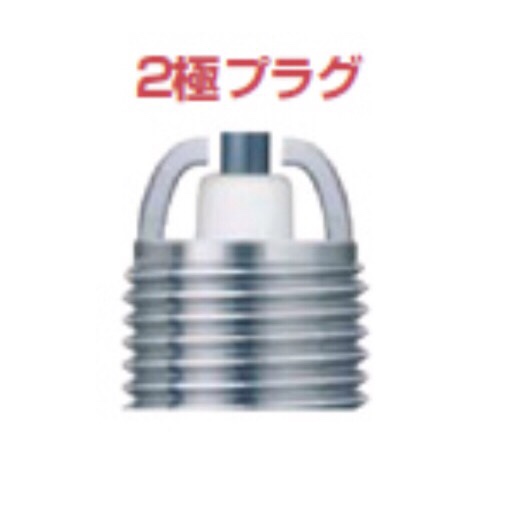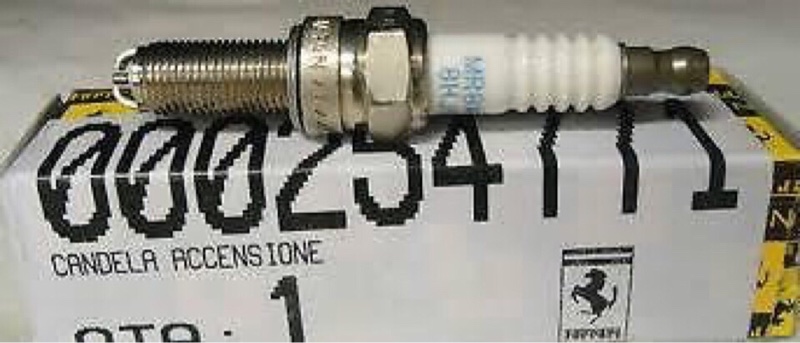Analog records were not in the realm of engineering, but rather of emotion, so they were not understood at all.

The Denon DP57L/M record player was released when I was transferred to the Product Planning and Sales Department. The retail price was ¥79,800.


The biggest feature of this record player is that the tone arm is equipped with a purely electronic, non-contact low-frequency resonance damping mechanism.

At that time, "high compliance cartridges" with softer stylus movement were released to improve the trackability of records.
Denon released the DL-305 and DL-1000, but the yield of the DL-1000's evaporated amorphous boron cantilever was poor, and the insulation of the winding was also poor, so Denon was unable to fulfill orders from retailers and received complaints, so they changed the model to the DL-1000A.
DENON DL-1000A MC cartridge, released in 1982 (Showa 57), ¥100,000.

However, when such a cartridge is mounted on a long arm and a heavy headshell, it reacts to the warping or eccentricity of the record, causing intermodulation distortion in the music signal at low resonance frequencies, resulting in poor sound quality.

Because intermodulation distortion occurs in the music signal when playing a record player, the mechanism of the record player needs to dampen low-frequency resonance.
We released a record player the year before this one was released.

So that's how the AD-1 was born. I see.

My physical strength is declining year by year, but my workload is steadily increasing, and I haven't had a weekend for years. I've got a backlog of old product repairs to do, and I'm getting irritated by the constant demands. I know I should quit my development work, but for some reason, I just keep doing it. Recently, we'll soon be releasing the PCA-25, an adapter for widening the RIAA equalizer curve. I've received a fair number of preorders, which is also a source of joy. I want to find my motivation switch, but I can't find it. I'm currently working on creating a high-resolution microphone capable of recording up to 100 kHz. The background noise is 16 dB, which is only 1 decibel higher than the B&K 4006, so I think it's practical. I plan to price it at over 200,000 yen. I'm also hoping to file a patent, so it's a difficult task. I'd love to find the time to talk to you in detail, but please give me a call for now. Thank you in advance.
I was searching online for the test record AD-1, released by the Japan Audio Society, and came across the Fedelix website.
In fact, the lacquer disc of this test record called AD-1 was discovered at our Kawasaki factory, and at the direction of my then boss, Takeaki Anazawa, I was the one who re-pressed it and delivered it to the Japan Audio Society.
Reading Nakagawa-san's article at Federix, it's clear that he has precise ideas regarding the low-frequency resonance of record players.
In fact, during the production of the AD-1, a lacquer disc of a test record used to check the low-frequency resonance frequency to demonstrate the electronic tone arm resonance damping mechanism installed in the Denon DP-57L was also discovered.
Using this master disc, we approached Seibundo Shinkosha MJ Radio and Jikken Magazine editor-in-chief Ogawa about producing and selling a test record, and the record below was released commercially.
The Japan Audio Society's AD-1 is a sweep signal starting from 4 Hz, so the low-frequency resonance frequency can only be determined using a stopwatch.
And what I want to emphasize most is that while the above-mentioned ultra-low frequency signal is recorded on the left channel, a 1kHz sine wave is recorded on the right channel, so the 1kHz sine wave is modulated by the low-frequency resonance of the tone arm, resulting in the "beep beep" sound.
Analog record players are currently a hot topic again, but there is no understanding at all of the negative effects caused by record players' low-frequency resonance frequencies existing around 3Hz or 7Hz.
After seeing your work, Mr. N, I was inspired to see you develop an "analog record player system based on sound theory" as a future product development, which is why I am writing to you.
I was also the one who planned and produced the test record for the DP-57L demo.
I recently moved, and I unearthed this test record in a cardboard box in my house, so if you have time, I would like to bring it with me if you can play it.
I designed and produced a test record on Amazon that allows you to check the low-frequency resonance frequency of each record player system better than the AD-1.
I immediately read the (other) article, and the article titled "On the low-frequency resonance frequency (f0) and damper aging due to cartridges and tone arms" was exactly what I had been advocating.
Released by Nippon Columbia, this metal master was later discovered at the Kawasaki factory, and released by the Japan Audio Society under the name AD-1. At the same time, the metal master of a demo test record for the electronically controlled contactless damping mechanism, which I had planned, produced, and distributed, was discovered, and the above record was reissued by Seibundo Shinkosha's MJ magazine.
MJ Technical Disc
Takematsu Mai: Moonlight
+Analog System Check Disc
Manufactured by RTI in the USA
HQ180 heavyweight vinyl 2LP
The ultimate HiFi disc of the 20th century

The reason the ideal low-frequency resonance frequency is 10Hz to 13Hz is that the music signal recorded on a record is up to around 20Hz, and at 33.5 rpm, noise caused by warping or eccentricity of the record peaks at around a few Hz, with ultra-low-frequency noise distributed down to around 10Hz.
When a high-compliance cartridge is mounted on a heavy headshell with a long arm, the low-frequency resonance frequency can be as low as 4Hz.
When the tonearm resonates at such an ultra-low resonance frequency, the music recorded on the record will be distorted by the warping or eccentricity of the record.
The most important thing to remember here is that with an inappropriately matched record player, the low-frequency resonance frequency will be modulated by the warping or eccentricity of the record, causing the music signal to become muddy.
Filtering out the sub-20Hz band of the music signal that has been modulated by the record player's low-frequency resonance frequency will not improve the already-dirty sound.
In other words, you need to understand this basic point: low-frequency resonance modulates the music signal at that frequency.
Think of the water balloons you see sold at festival stalls.
They are filled with water, but large balloons are heavy. Smaller balloons are light.
Imagine that one water balloon is tied to rubber, but is that rubber soft? Or relatively hard?
Try tying two water balloons of the same size to two different types of rubber and playing yo-yo with them.
The water balloon tied to the soft rubber will move up and down slowly.
The water balloon tied to the harder rubber will move up and down quickly.
This rubber provides the cartridge compliance (ease of movement).
The bass frequencies of music signals recorded on records extend up to around 20 Hz.
Ultra-low-frequency noise caused by record warping or eccentricity peaks at a few Hz and extends down to around 10 Hz.
The "low-frequency resonance frequency" varies depending on the weight (effective mass) of the tone arm, headshell, and cartridge, as well as the flexibility of the cartridge's cantilever (compliance).
Many engineers mistakenly believe that the low-frequency resonance frequency is always around 10 Hz.
When a lightweight cartridge with a high compliance, samarium-cobalt magnet, like the DL1000A, is mounted on a long arm and a heavy headshell, the low-frequency resonance frequency is around 4 Hz.
When observing low-frequency resonance with a relatively heavy cartridge with a low compliance, alnico magnet, like the DL103, mounted on a high-sensitivity arm, the tone arm vibrates violently at the resonance frequency.
This is due to the high resonance sharpness.
The more sensitive the arm, the more noticeable the adverse effects of resonance.
Select a tone arm and headshell based on the cartridge's characteristics.
High-sensitivity tone arms tend to have more noticeable low-frequency resonance effects.
The low-frequency resonance frequency is called fo.
Since fo is the low-frequency reproduction limit, setting the low-frequency resonance frequency of the cartridge attached to the tone arm to 10Hz-13Hz will prevent noise caused by warping or eccentricity in the record from being reproduced. Or so they believe.
Misunderstandings
① Important Point 1
Even if the low-frequency resonance frequency is set to 10 Hz, the music signal being played will experience modulation distortion at the low-frequency resonance frequency of the tone arm, etc.
② Important Point 2
In other words, music signals above 20 Hz played by a record player already have intermodulation distortion superimposed on them due to low-frequency resonance, resulting in a dirty sound.
③ Important Point 3
Attenuating the ultra-low frequencies below 10 Hz in music signals that have been corrupted by intermodulation with a subsonic filter will not improve the sound.
④ Important Point 4
A mechanism must be installed to suppress the low-frequency resonance of the record player to prevent the vibrations from the record grooves from causing intermodulation distortion.
Incidentally, I recently came across a video by a small audio manufacturer that argues that using DC amplifiers with MC head amplifiers is a no-no because it will damage speakers, based on the problem of intermodulation distortion caused by low-frequency resonance in record players and their own theory that the low-frequency resonance frequency of record players is around 10Hz.
① The fact that the low-frequency resonance frequency of a high-compliance cartridge mounted on a long arm with a heavy headshell will be around 4Hz or 6Hz is unrelated to the fact that a speaker's woofer does not wobble when the damping factor of a DC amplifier is high.
And
② Even DC amplifiers have AC coupling at the output via a coupling capacitor and resistor.
MC head amplifiers with bipolar transistor base inputs have electrolytic capacitors inserted at the signal input, so using such AC amplifiers with MC head amplifiers is not good.
I commented on this, but it made me realize that people these days may have professional-level electrical knowledge, but many are amateurs when it comes to mechanical engineering.

I wanted people like this to try out the test record I made to check low-frequency resonance frequency.
In 1987, when I was involved in sales promotion for the DP-57L, I asked Yukio Takahashi, who joined the company at the same time as me and worked in the Software Technology Division, to create the sound source. After cutting the lacquer disc with a Neumann cutting machine that had been replaced with a Denon AC servo motor at Akasaka Studio, we published a limited edition of 500 copies at the Kawasaki factory as a demonstration test disc for the Denon Dynamic Servo Tracer, an electronically controlled low-frequency resonance prevention mechanism.































































































